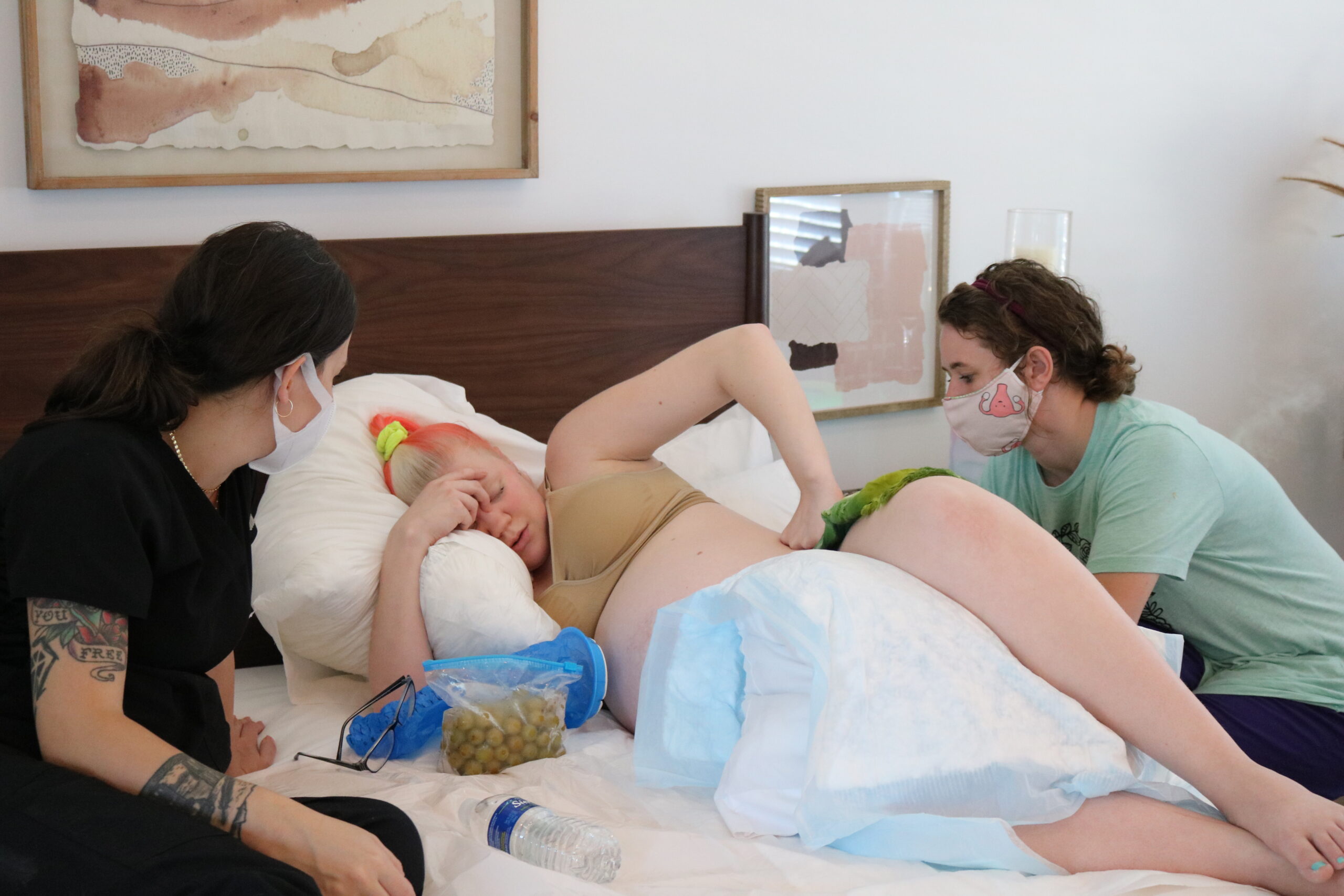
A few years ago I felt trapped. I was in a room and not allowed to leave for two days. I was in intense pain the whole time and I couldn’t sleep. I was denied food and not given very much water. I was told that I wasn’t performing well enough. I was told to take medicine or I would be abandoned. at the end of the two days I fainted from loss of blood, lack of food, lack of water and exhaustion. I was mocked by anyone who came into my room for fainting. I was laughed at for finally and involuntarily succumbing to sleep.
Whatever that story may have sounded like to you, it does not sound like medical care. It sounds more like torture. But it was my very first birth story. It was my entrance into motherhood. Being teased for exhibiting strength under no food during labor hospital policies. My lack of water was a lack of support. My family did not know how often I should be drinking and the staff made no efforts to make sure I was staying hydrated.
At no point in life would we expect someone to go through the biggest marathon of their life denied nutrients. But we do in American hospitals.
So let’s first talk about the why.
“When aspiration was recognized as a major problem during birth in the 1940s, anesthesiologists were using very primitive tools to keep a person’s airway open when under general anesthesia, and some didn’t use airway tools at all. New versions of a tool called a laryngoscope were developed in the 1940s, allowing doctors to view a patient’s vocal cords so that they could place a tube in the trachea (intubation) and keep an open and protected airway during general anesthesia (Robinson & Toledo, 2012). The design, technique, and popularity of laryngoscopes and intubation continued to improve over the second half of the 20th century.”
Evidence Based Birth
So the truth is medical technology has advanced! And that is one of the reasons that hospitals should adjust their no food in labor policies.
“…when researchers conducted the first large U.S. study to look at maternal deaths related to anesthesia between the years 1979 to 1990. General anesthesia was used in 41% of the sample in the earlier years, and 16% of the sample in the later years. The risk of death as a result of aspiration during Cesarean was 0.7 per million births, or 1 death for every 1.4 million births (Hawkins et al. 1997).”
Evidence Based Birth
It’s hard to find lower risks than that! There’s also the fact that, when in labor, you naturally eat less as labor progresses. If a mom is hungry that is her body saying she needs food!
“The authors of the Cochrane review note that most women seem to naturally limit their intake as labor gets stronger. They concluded that low-risk women should have the right to choose whether or not they would like to eat and drink during labor (Singata et al. 2013).”
Evidence Based Birth
Another thing to consider is that the stomach is not likely to be truly empty because labor slows down many functions of the body like digestion.
“…fasting for 8, 12, or even 24 hours after contractions begin may not guarantee an empty stomach at the time of birth.”
Evidence Based Birth
But wait, there’s more!
The biggest reason that these policies should be adjusted is that parents have the right to make informed decisions. With policies like this the power is taken from families. But if conversations are had then parents can make the best decision for their circumstance.
I started drafting this blog post yesterday but didn’t finish because I was called in to a birth. At that birth, as with most birthing center births, mom was allowed to eat. No one questioned her on it and her energy levels were able to stay up for the long hard pushing phase. Her baby was sideways, head was cocked, her shoulders got stuck in the pelvis, AND she was a 9 lb and 15 oz baby! So this was not an easy task but mom and the midwives were able to bring the baby safely earthside. And part of the reason she had the energy and will to do what was needed is because she had nutrients in her body.
But even with eating it was still a long and arduous process and mom almost fainted a couple of times when she first went to the bathroom. I watched as the midwives loved on her, reassured her, and helped her get back to her bed. It wasn’t mentioned again except when she was offered an IV to help restore her. Instead of mocking her for needing to recoup her energy she was praised. “You went through quite a long process no wonder you feel light headed!” “You did so amazing, you deserve a long rest!” And it was healing for me to watch. Because that isn’t my birth story but I get to be a part of the team that creates that kind of birth story for others. And that is why I do what I do.


0 responses on "Fed is Best"